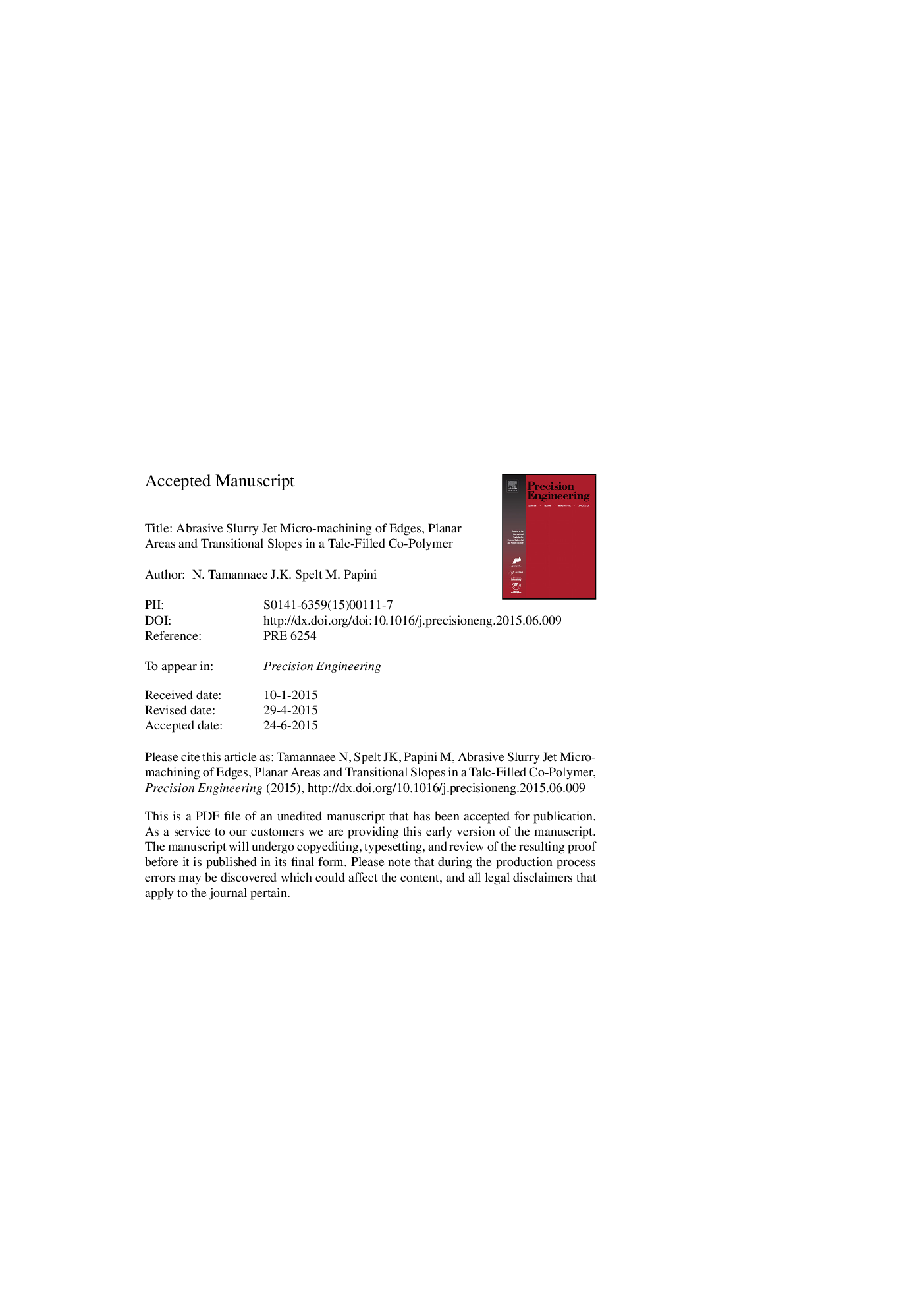| Article ID | Journal | Published Year | Pages | File Type |
|---|---|---|---|---|
| 7180666 | Precision Engineering | 2016 | 55 Pages |
Abstract
The abrasive slurry-jet erosion of a talc-filled thermoplastic olefin (TPO) (60% PP, 25% EP rubber and 15% talc) was measured as a function of the impact angle and the talc filler content. A ductile erosion response was observed, showing a maximum erosion rate at 45°. A superposition model was then developed to predict the cross-sectional shapes of small-scale flat-bottomed pockets and curved edges machined in TPO using abrasive slurry-jet micro-machining (ASJM). The model was based on the spatial distribution of the erosion across the jet footprint measured during a shallow “first pass” channel at a specific angle. The model predictions of planar depth and waviness were in close agreement with experimental measurements. The measured dependence of the erosion rate on the impact angle was used to develop novel machining configurations to increase the slope of bounding sidewalls.
Related Topics
Physical Sciences and Engineering
Engineering
Industrial and Manufacturing Engineering
Authors
N. Tamannaee, J.K. Spelt, M. Papini,
